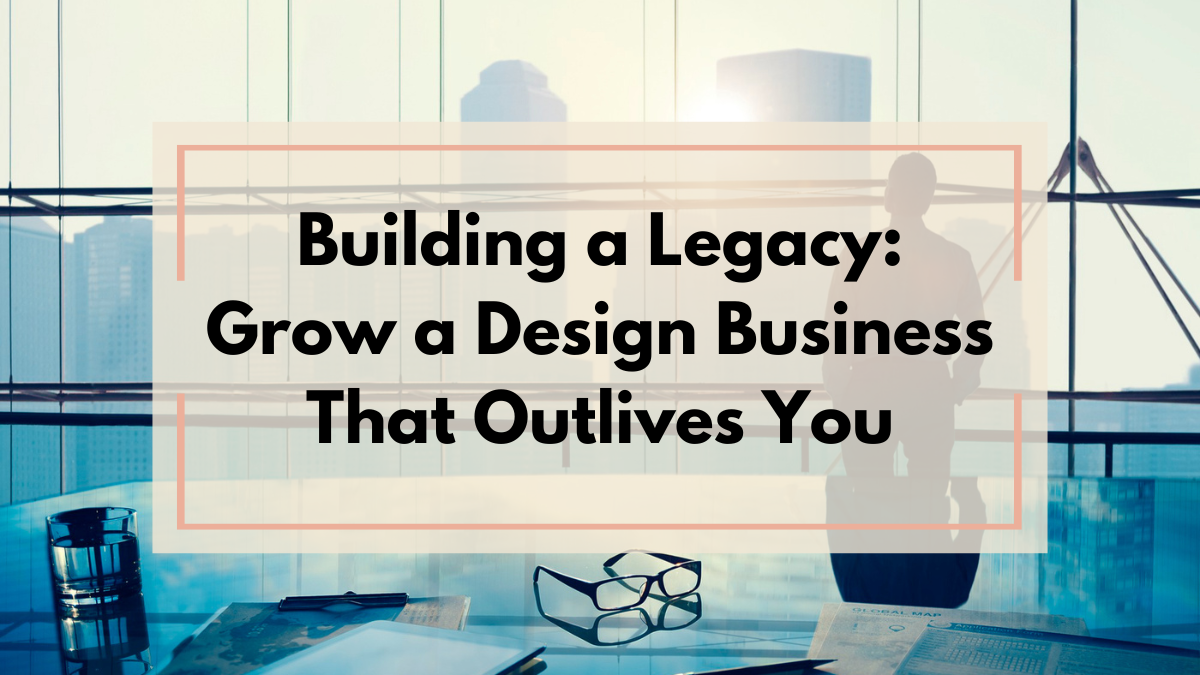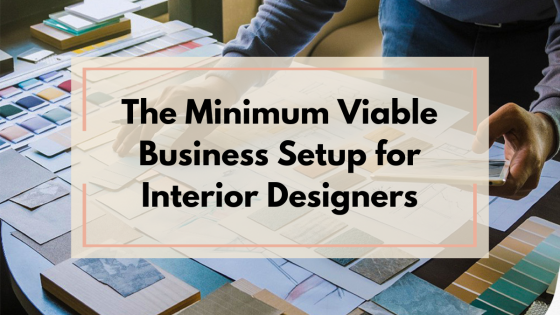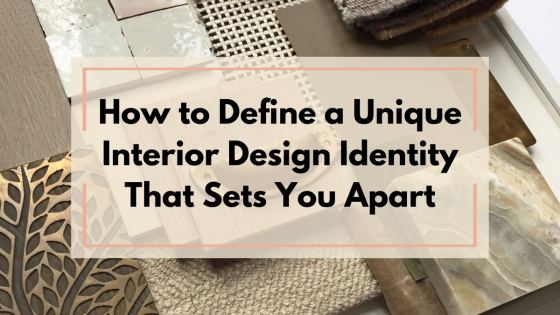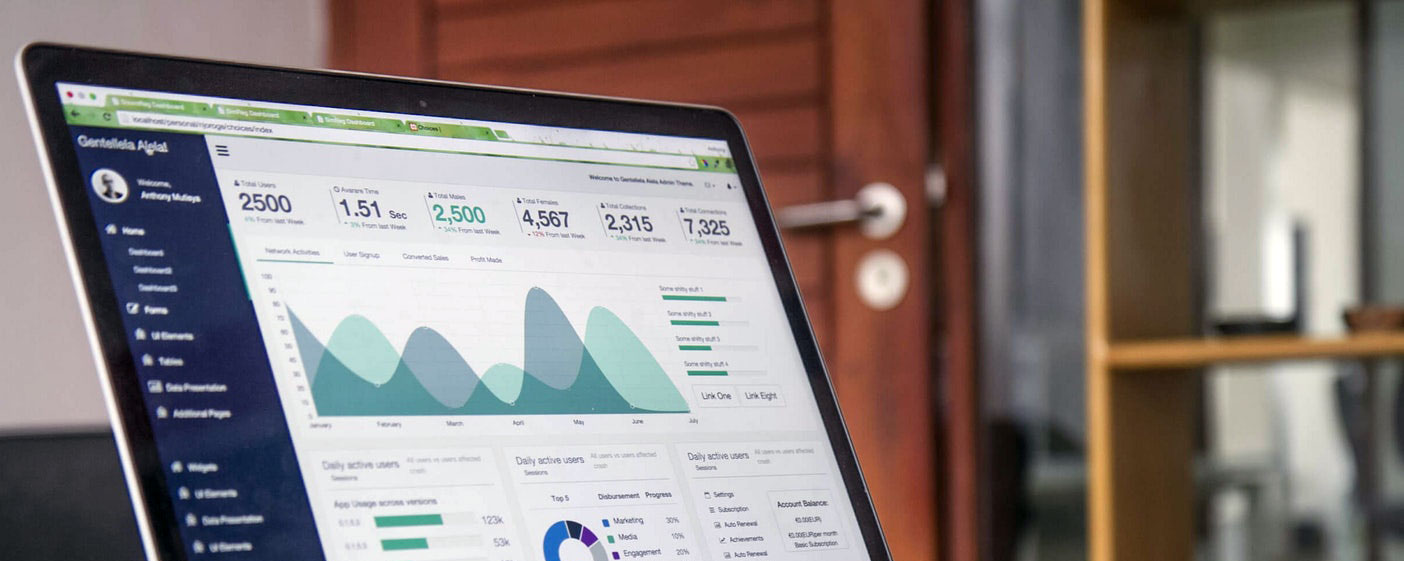Building a Legacy: Grow a Design Business That Outlives You

There comes a point in every successful interior designer's journey when the question shifts from "How do I keep growing?" to "How do I build something that lasts beyond me?"
Building a legacy is about creating a business that runs without you, scales beyond you, and serves your clients and team at a higher level. You get to build something that you can leave behind. The most successful design businesses transcend their founders, evolving from "just me" to a thriving enterprise that can operate without you being involved in every decision. Whether your goal is to sell your business eventually, pass it to a successor, or simply create more freedom in your life, building a business that can exist beyond you is the ultimate mark of entrepreneurial success.
For many designers who built their businesses on personal talent and relationships, this transition can feel impossible but with strategic planning and intentional systems, you can create a design legacy that continues to flourish even when you're not at the helm.
In this post, we’ll break down the key pillars of building a sustainable, scalable interior design business. This isn’t a theory. It’s strategic, practical, and built for seasoned designers ready to think long-term.
#1. Shift from Designer to CEO
If you’re still making every decision and signing off on every tile, it’s time to step into a higher role.The first step to building a legacy is changing your mindset. Stop seeing yourself as just the lead designer and start operating as the CEO. That means zooming out and focusing on big-picture strategy, growth, and systems.
Ask yourself:
- What do I want this business to look like in 10 years?
- What needs to change for me to work on the business, not just in it?
Empowering others to lead, letting go of control, and trusting your team is essential here.
680aaaaae9297_lg.png)
#2. Build Systems That Scale
The key to transcending the founder-centric model is developing robust systems that allow your design vision and standards to be executed consistently by others. Here's how to begin:
- Document your design process: Break down your intuitive design approach into clear steps that can be followed by others. What questions do you ask during client discovery? How do you develop concepts? What's your presentation process? Create detailed workflows for every phase.
- Standardize communication: Develop templates for client communications, from initial inquiry responses to project updates. This ensures consistency and saves time.
- Create a design language guide: Document your signature aesthetic principles, favorite materials, and distinctive touches that make a space recognizably "yours." This helps team members understand and execute your vision.
- Build a resource library: Compile your trusted vendors, craftspeople, contractors, and product sources in a shared database that team members can access.
- Develop quality control checkpoints: Establish review stages where you can provide feedback before client presentations, ensuring quality without requiring your involvement in every detail.
680aa4304cccc_lg.png)
#3. Build a Leadership Team
You can’t build a legacy solo. You need leaders who can carry the vision, manage teams, and drive projects with minimal input from you. Think of roles like:
- Operations Manager
- Project Coordinator
- Client Experience Lead
- Studio Director
Hiring leaders might feel scary and expensive, but they’re essential if you want to scale sustainably. Start by identifying which hat you wear the most and hire for that role first.
Alternatively, you can cultivate leadership by identifying potential successors early, giving them increasing responsibility, investing in their training, and mentoring them to eventually run major aspects of the business.
680aa478f0287_lg.png)
#4. Creating Multiple Revenue Streams
A sustainable design business often extends beyond the traditional client service model to include diverse income sources:
- Product lines: Consider developing signature furniture pieces, accessories, or textiles that align with your design philosophy.
- Licensing agreements: Partner with manufacturers to create products under your brand name.
- Education: Package your knowledge into courses, workshops, or mentoring programs for other designers or design enthusiasts.
- Real estate development: Use your design expertise to identify, renovate, and sell or lease properties.
- Subscription services: Create recurring revenue through maintenance plans, seasonal refreshes, or access to trade discounts for past clients.
Each additional revenue stream reduces dependency on your personal billable hours and creates value that can eventually be sold or transferred.
680aa6b43495e_lg.png)
#5. Valuation and Exit Planning
Even if retirement seems distant, building your business with an eventual exit in mind makes it stronger today:
- Focus on profitability: A consistently profitable business is worth more than one with higher revenue but lower margins.
- Track performance metrics: Document key performance indicators like client acquisition costs, project profitability, and client lifetime value.
- Build recurring revenue: Develop service packages or retainer models that generate predictable income.
- Protect intellectual property: Trademark your business name, logo, and product designs to enhance business value.
- Formalize client relationships: Ensure contracts and client relationships are with the firm, not just with you personally.
- Develop a transition timeline: Create a 3-5 year plan for gradually reducing your involvement while maintaining business continuity.
680aa67e9ec21_lg.png)
#6. Technology as a Multiplier
The right digital tools can capture your expertise and facilitate consistency:
- Project management software: Implement systems that track every project detail and maintain communication standards.
- Digital design libraries: Create searchable resources of past projects, material specifications, and vendor information.
- Client portals: Provide clients with self-service access to project updates, approvals, and communications.
- Virtual collaboration tools: Enable team members to work effectively regardless of location.
- Financial management systems: Ensure robust tracking of project costs, profitability, and overall business performance.
680aaa809d36a_lg.png)
Conclusion
Building a legacy business isn’t reserved for the “big” firms. It’s available to every experienced designer willing to think strategically, lead courageously, and systemize wisely. Yes, it will take effort. Yes, you’ll have to let go of some control. But the reward? A business that thrives with or without you. A team that feels empowered. Clients who trust your process. And the space to dream even bigger.
When your business can operate smoothly during your vacation, handle multiple projects simultaneously without quality suffering, or continue growing without requiring more of your personal time, you've achieved something remarkable. You've transformed your talent into a true enterprise.
The journey from a founder-dependent business to a sustainable company is a marathon, not a sprint. It requires intentional planning, systematic documentation, and thoughtful team development. It may also mean saying no to certain opportunities that don't align with your long-term vision. Each small step forward moves you closer to a business that honors your design vision while creating options for your future. P.S. Think about one system or process that you can implement and start building your design legacy.
Ready to transform your project management approach? Check out RDash to see how their designer-focused platform can streamline your operations. Use exclusive discount code “INDesignDeskfeb25” to get 20% off your subscription plan! If you’re serious about optimizing your workflow, sign up for a free demo session right here.
Thank you for reading ❤️
Categories: : Business Strategy
 Rikaza Shakeer
Rikaza Shakeer 



